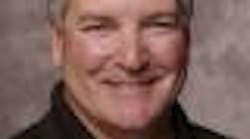If your team isn’t ideal, then start with what you have
Jim Collins wrote the book “Good to Great” in 2001. When I bought the book, the cover boldly stated, “More than 800,000 copies sold.” At the time of this writing, I checked and found the book has sold more than 3 million copies. Collins and his team tried to decipher the secret sauce that made a handful of companies (11) great. Collins and his team consumed 10.5 years of research analyzing an enormous amount of data.
This article is part of our monthly Human Capital column. Read more from Tom Moriarty.
Two of the 11 companies that were proclaimed to be great have since fallen from grace: Circuit City and Wells Fargo. Fannie Mae was also cited as a great business, but arguably it went astray during the leadup to the 2008 recession. In these cases I’ll concede that these organizations likely strayed from the precepts explained in “Good to Great.”
I loved the book. It shed light on a number of interesting concepts. For perspective, I’m hoping to sell 5,000 copies of my new book, “The Productive Leadership System: Maximizing Organizational Reliability.” The definition of blasphemy is the act or offense of speaking sacrilegiously about sacred things. Given my so-far meager book sales, it can be argued that I’m being blasphemous when I criticize “Good to Great.”
What’s the sacred thing? Collins believes the sequence to creating a great organization is to assemble a team of disciplined people, engage in disciplined thought, and carry out disciplined action. Disciplined people means having a Level 5 Leader and getting the right people on the bus. I have no argument with the concept that getting the right people on the team is important. I disagree that most organizations can do that first.
Sure, Collins’ approach is aspirational; if you have the capability, do it that way. In the vast majority of cases, it’s not practical. Whether we’re talking about the CEO, an operations manager, a line supervisor, or a tradesman, the organization already has people. In tight labor markets, organizations don’t have the luxury of being picky about who they have on their team.
Regionally, companies are poaching workers from each other. The pie is not big enough. Every company is trying to get a bigger slice of the pie. In that environment, it’s really hard to attract and retain talent. Organizations may do their best, but at the end of the day they’ll fill as many open positions they can, with people who have as much of the required knowledge as they can get.
Companies should shape the culture they want by defining the right behaviors and holding people accountable for those behaviors. Leaders need to spend time shaping the behaviors of the people they have to get the culture they want.
I believe if your organization is not already great, you have to start from where you are. Discipline starts with defining direction: mission, vision, values, and objectives. This is more like Collins’s disciplined thought. He says you need to confront the brutal facts (conduct an honest assessment of your situation) and have a hedgehog concept (the intersection of what you are passionate about, what you can be best in the world at, and what drives your economic engine).
I believe senior leaders must define the direction. If you want people to achieve great things, those people need to know explicitly where you’re headed. So, I say for practical cases, start with disciplined thought. Identify strengths, weaknesses, opportunities, and threats. Face the brutal facts. Assess, define, authorize, and implement policies, plans, processes, procedures, and measures that give people guidance. Leaders then guide disciplined actions in carrying out guidance, eventually creating a culture of discipline and the ability to leverage technology or continuous improvement.
Over time, organizations can develop current staff and team members. When positions open, fill them from within, promoting people who have demonstrated accountability and discipline. That’s the best way to keep the right people on the bus and get them in the right seats. People who refuse to follow direction and guidance pull other people down. They should be shown the way off the bus.
I have a great deal of respect for Collins and his team. They influenced a generation of leaders. I’m also envious of their book’s commercial success. But it is always OK to question sacred things when we live in the real world.


